Oceanpunk, a nuanced subgenre within science fiction, goes back to the late 20th and early 21st centuries. One of its earliest literary influences was Jules Verne’s work “20,000 Leagues Under the Sea,” published in the 1870s, which laid a foundational aesthetic for the genre. However, the aesthetic did not come to a large rise until the 1990s, with pivotal works such as Neal Stephenson’s “Snow Crash” and William Gibson’s “Neuromancer.” These works helped the genre move away from the broader steampunk movements, playing a pivotal role in shaping the distinct identity of oceanpunk. Authors like Verne, Stephenson, and Gibson became key players, steering oceanpunk towards uncharted territories within the science fiction arena. This subgenre offers a futuristic setting where society deals with challenges and sometimes the opportunities the ocean brings in a post-apocalyptic context, delving into themes of environmental adaptation, technological innovation, and societal transformation.
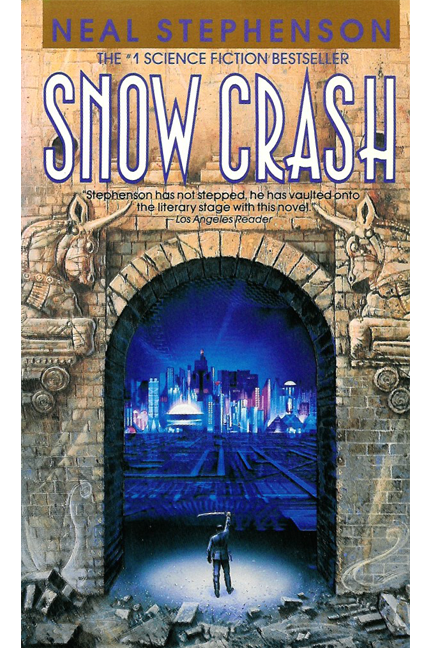
At the very core of oceanpunk we see a narrative exploration of a future society that not only adapts to but thrives in an environment dominated by the ocean. The subgenres lean towards post-apocalyptic settings, societal transformation, and the exploration of marine life gives off an extremely distinctive and immersive form of storytelling. This narrative lays out a ground for creators to delve into themes of environmental adaptation, technological innovation, and the societal repercussions of a world shaped by the vast expanses of the ocean.
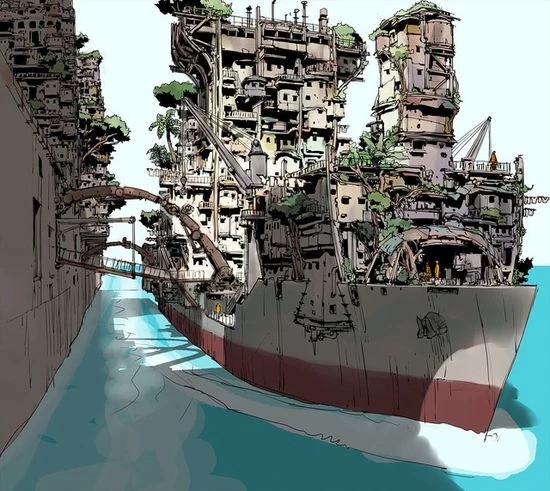
The influences shaping oceanpunk are both diverse and intricate. As mentioned before, Jules Verne’s early forays into underwater realms and marine technology served as a foundational blueprint for subsequent creative endeavors. The cyberpunk movement, with its emphasis on technology, societal evolution, and dystopian futures, was the largest contributor to reshaping oceanpunk into a subgenre that resonates with contemporary concerns and imaginations. Also, oceanpunk draws inspiration from real-world environmental challenges, incorporating a heightened awareness of the oceans’ fragility and the urgent need for preservation.
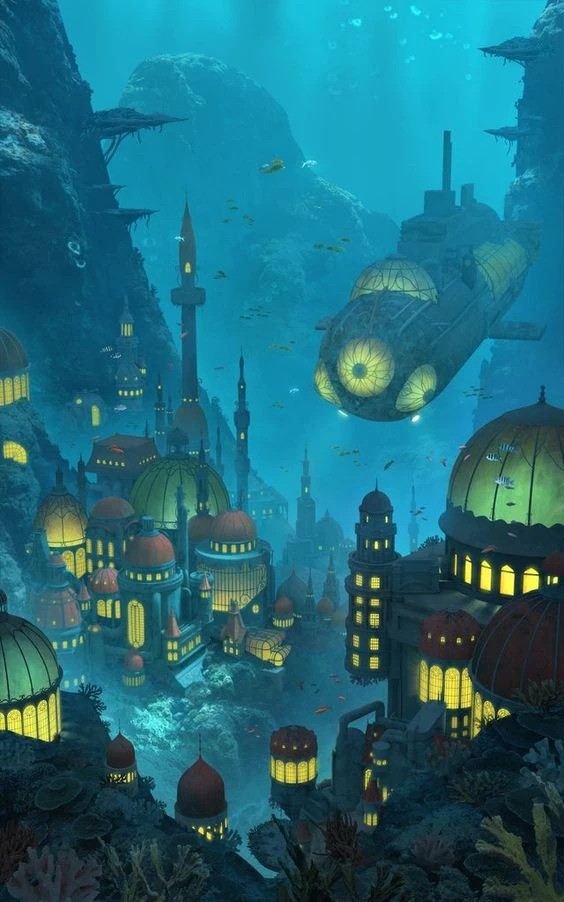
Since its inception, oceanpunk has transcended the boundaries of literature to become a cultural touchstone influencing various creative mediums. While not entirely following the genre to a tee some video games, such as the game “Subnautica,” offer players immersive experiences in intricately designed underwater landscapes, providing a tangible encounter with oceanpunk themes. Cinematic endeavors, including films like “Waterworld” and “The Abyss,” have adeptly incorporated oceanpunk elements, contributing to the subgenre’s place in entertainment. Another large show we can see the use of oceanpunk is “The Marvelous Misadventures of Flapjack” where the show is based around an oceanic landscape and town where they use steampunk like vessels to explore the ocean. Beyond the area of fiction, ocean punk in some areas has sparked critical discussions on climate change, environmental sustainability, and the imperative to preserve marine ecosystems, underscoring its broader societal influence.
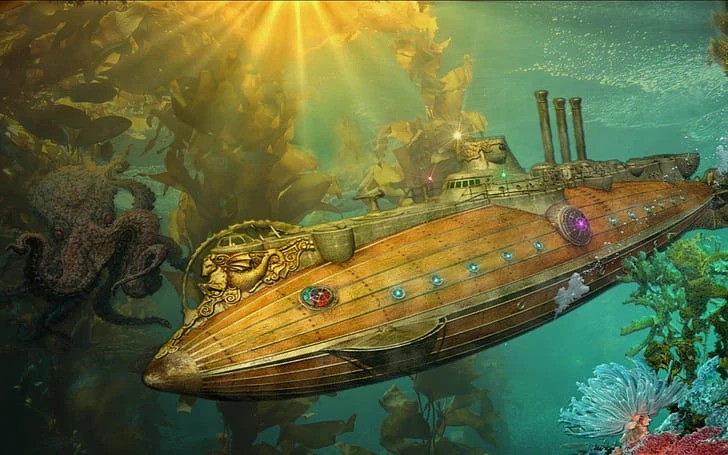
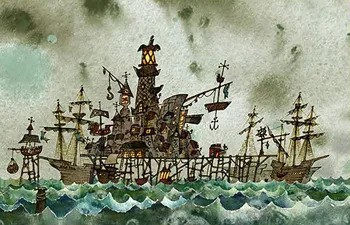

Recources
Wiki, Contributors to Aesthetics. “Oceanpunk.” Aesthetics Wiki, Fandom, Inc., aesthetics.fandom.com/wiki/Oceanpunk.
Moench, Katie. “Diving into the Sub-Genre of Oceanpunk.” BOOK RIOT, 22 June 2023, bookriot.com/what-is-oceanpunk/.
“Ocean Punk.” TV Tropes, tvtropes.org/pmwiki/pmwiki.php/Main/OceanPunk.
Images
[1]Stephenson, Neal. “Neal Stephenson – Snow Crash.” Neal Stephenson – Home, www.nealstephenson.com/snow-crash.html.
[2, 3, 4]Wiki, Contributors to Aesthetics. “Oceanpunk.” Aesthetics Wiki, Fandom, Inc., aesthetics.fandom.com/wiki/Oceanpunk
[5]“The Marvelous Misadventures of Flapjack.” Wikipedia, Wikimedia Foundation, 23 Jan. 2024, en.wikipedia.org/wiki/The_Marvelous_Misadventures_of_Flapjack.
“Twenty Thousand Leagues under the Seas.” Wikipedia, Wikimedia Foundation, 24 Dec. 2023, en.wikipedia.org/wiki/Twenty_Thousand_Leagues_Under_the_Seas.
ChatGPT used in aid of editing of this paper

2 Comments. Leave new
The best and possibly easiest to miss point of Oceanpunk that you do well to call out is the setting context of the aesthetic: the environments of the Earth have been polluted so heavily that humanity must once again adapt to a new environment. Steampunk’s aesthetic and themes rarely delve into the consequences of industry, but Oceanpunk’s themes are aware, and that is portrayed well here.
One thing that I was almost surprised not to see in the post is the mention of the video game series “Bioshock”, and I was wondering if you have ever seen it? Bioshock is where I am familiar with Oceanpunk from, and it is almost over the top with it’s imagery and themes of Oceanpunk. I highly recommend checking it out if you’re able, its a very unique piece of media.
I tried to point out the thing that, as you put it, most people seem to miss. Although a very niche aesthetic I have always been interested in some aspects of the overarching idea. As far as Bioshock, I have heard of the game and I honestly should have mentioned it but not many things in the media are coined as “oceanpunk” so it was never brought up in my research and totally slipped my mind.